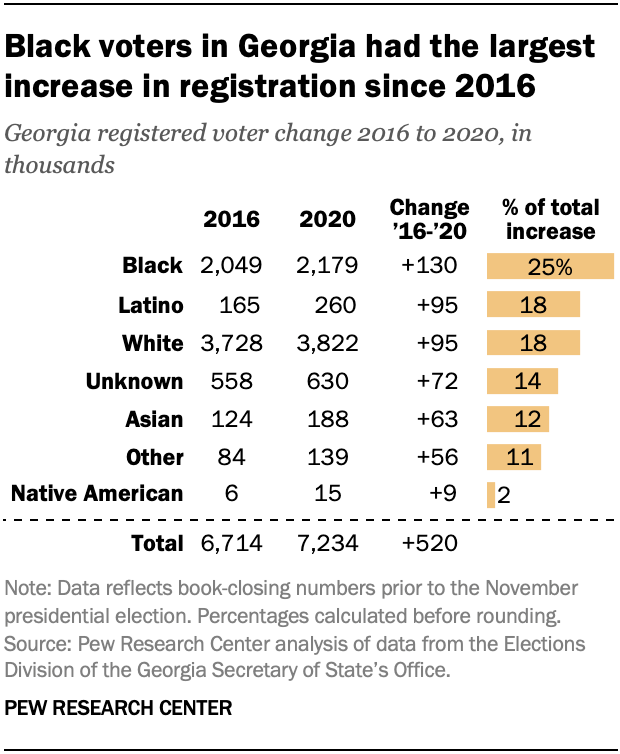

The estimated equation also indicates that net growth in registered voters during 2020 maps roughly one-to-one into additional votes.
#VOTER DATA ANALYSIS PROGRAMS PLUS#
Trump’s increase in votes between 20 in each Pennsylvania county, as a percentage of the county’s combined (Trump plus Clinton) 2016 vote count, is mostly explained by net growth in registered Republicans during 2020 (see chart 4). The estimated regression equations yield findings that are somewhat phenomenal. For those readers unfamiliar with linear regression, please just bear with us. These regressions account for the contribution of growth in registrations and other relevant, quantifiable factors. We then estimate linear regression equations for each candidate’s percentage increase in votes across counties. Rather than measure these in relation to their respective party’s 2016 vote count, as was done previously, we shall now calculate these as a percentage of total votes cast in 2016 for both parties’ candidates (Trump and Clinton) combined. Because of its unusual, outlier status, we exclude Philadelphia from this analysis.įor a more apples-to-apples comparison between Trump and Biden, we need to apply a common denominator for their percentage increases in votes between 20 in a county. How did Trump fare against Biden after factoring in growth in registrations and other observables? Let’s now embark on the next stage of our magical numerical mystery tour, in which we shall more precisely quantify Biden’s versus Trump’s performance in gaining votes, county by county. This happens to be a county with a large percentage of vacation homes belonging to residents of New York and New Jersey, and this data point is consistent with news reports that residents of New York were voting from second homes in Pike County. Notably, the county with the largest percentage gain for Biden, appearing as somewhat of an outlier in the chart, is Pike County, with a whopping 41 percent increase in votes relative to Clinton in 2016. In Democrat as well as in Republican strongholds, Biden dominated by this measure. What makes these county-by-county percentage gains puzzling, aside from Biden’s initial disadvantage with respect to growth in registrations, is their consistency across counties. Data downloadable from Pennsylvania’s Department of State yield the following, indisputable fact: the Republican Party grew its registered voter population in the state at a substantially higher rate than the Democratic Party after 2016, and especially during 2020.Ĭhart 3: Percent change in number of votes between 20, by party (Note: each dot represents a county, located along horizontal axis in relation to Trump’s 2016 share of votes) Second, a net gain in registered voters in one direction or the other might be an indicator of voter sentiment overall.


First, a net gain in registered voters for one party or the other is likely to translate into a net gain in votes, and, in fact, this plausible hypothesis can be tested statistically, as we shall see shortly.
#VOTER DATA ANALYSIS PROGRAMS REGISTRATION#
Those whose registration status changed between 20 are clearly an important group to consider, for two reasons. The 2020 voter population divides into two mutually exclusive segments: those who changed their registration status between 20 (who joined or exited the registered voter pool, or who changed their party affiliation), and those who did not (who were registered to vote in 2016 and kept the same party affiliation or remained unaffiliated). If necessary, a meeting in Graz is also possible.Trump clobbered the Democratic Party in growing registered voter counts. Usually we can handle the whole project remote. After we received the payment we will send the high-resolution graphics and the adjusted data set.The project starts after you confirmed the order.We will send you a link to a form and a link to upload the data.Contact us via the contact form or email.For example, Mathematica can access the same data as WolframAlpha, which can significantly reduce project time. Mathematica understands a myriad of data formats and includes functionality well beyond Data Analysis which we gladly use to your advantage. We use Mathematica to analyse and visualise your data. This step is optional and can account for up to 50% of the project scope. We clean and prepare your data and check for inconsistencies, errors and different formatting. Our Approach We create data analytics and visualisations according to your requirements.


 0 kommentar(er)
0 kommentar(er)
